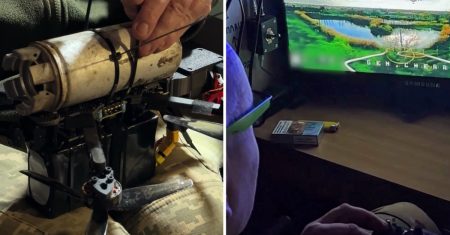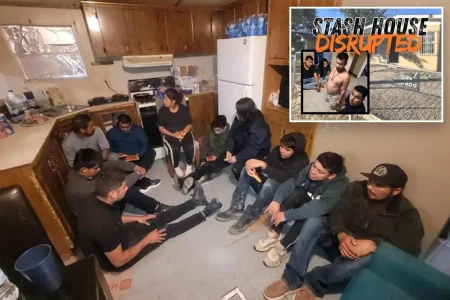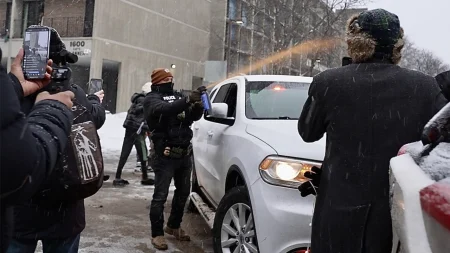A Moment of Presidential Warmth: Trump Connects with Young Visitors
In a touching moment that briefly transcended the divisive political landscape, President Donald Trump paused his demanding Oval Office schedule to greet visiting children, showing a gentler side of his personality that Americans rarely glimpse amid policy debates and partisan conflicts. Communications advisor Margo Martin captured and shared this heartwarming interaction online, offering viewers a candid look at the president engaging with Salena Zito’s grandchildren who had stopped by the White House. The brief video quickly amassed nearly half a million views within just two hours of being posted, demonstrating how such unscripted human moments can cut through the noise of a hectic news cycle following a government shutdown.
The simplicity of the exchange seemed to resonate with many viewers. “My name is Donald,” the president said with a warm smile when one child inquired about his name. This disarming introduction, stripped of titles and formalities, presented Trump in a grandfatherly light—a role he inhabits in his personal life as grandfather to eleven children. Throughout the interaction, Trump appeared genuinely delighted by the children’s presence, offering them presidential challenge coins as mementos of their visit. “She said yes—she’s smart,” Trump remarked with an appreciative laugh about one child, adding, “She’s so cute.” The interaction concluded with the president generously distributing pens to the children, counting out, “One, two, three,” as he handed them their keepsakes.
This brief glimpse into a more personal side of the president aligns with other occasions where Trump has shown warmth toward children, including coloring alongside young participants at the White House Easter Egg Roll earlier in the year. Martin, who regularly shares exclusive behind-the-scenes footage of Trump on her social media accounts, has become known for providing these unfiltered windows into presidential moments that mainstream media coverage often misses. Such content serves an important function in an era when most presidential interactions are carefully choreographed and filtered through multiple layers of official communication channels and media interpretation.
The public response to the video highlighted how such moments can temporarily bridge political divides. Comments like “that’s a grandpa doing grandpa stuff” and “kindness transcends politics” suggested that even in today’s polarized environment, there remains appreciation for simple human connections that remind us of our shared experiences. The video’s rapid spread across social media platforms demonstrates the power of authentic interactions to capture public attention, even—or perhaps especially—when they stand in contrast to the confrontational tone that often characterizes political discourse. In an age when presidential communications are meticulously crafted, these unscripted moments can feel refreshingly genuine to viewers across the political spectrum.
These kinds of candid presidential interactions have consistently generated significant online engagement, often reaching audiences who might otherwise tune out traditional political coverage. The widespread sharing of such content reflects a public hunger for humanizing glimpses of leaders who are frequently depicted in starkly partisan terms. While policy decisions and political strategies certainly define a presidency in historical terms, these smaller moments of human connection can shape public perception in powerful ways, offering dimensional views of figures who are otherwise flattened into political caricatures by the demands of modern media coverage and partisan messaging.
For the White House communications team, videos like this represent valuable opportunities to showcase the president’s personable side without the formal structure of press conferences or campaign events. The digital reach of such content—hundreds of thousands of views within hours—demonstrates its effectiveness in connecting with audiences in ways that traditional media appearances cannot match. While critics might view such moments as carefully cultivated for public consumption, their apparent spontaneity and warmth seem to resonate with viewers who appreciate seeing public figures engage in recognizable human interactions. As Martin’s video illustrates, sometimes the most impactful presidential communications aren’t policy announcements or formal addresses, but simple moments of connection that remind us of our shared humanity beneath the divisive rhetoric of contemporary politics.










